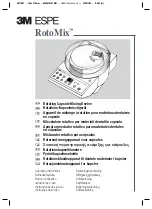
Page 17 of 22
ITS-90 Isothermal Towers Iss.07 – 05/14
Note: Putting numbers to the theory
Traditionally the fixed points of ITS-90 have been used on their freezes. This is because during freezing the metals
shrink; In by 2.3%, Sn by 2.5%, Zn by 4.6%, Al by 7.2% and Silver by 4.5%.
During melting, pressure can build up inside the cell as it melts and expands. This is why the freeze is chosen.
In practice it is very convenient to use the melt plateau for calibrating thermometers, and we, along with other
producers recommend it in all but the most exacting requirements.
However it is important to pre-warm the UUT before inserting it into the melting cell to avoid refreezing it.
This note explores the worst case situation of a UUT being inserted into a melting cell from room temperature.
For an Isotech model 670 thermometer the end 18cm weighs 10.5g.
The 670 will freeze 5.4cc’s of In, 4.4cc’s of Sn, 5.4cc’s of Zn, 7cc’s of Al and 11.2cc’s of Ag.
There are approximately 67cc’s of metal in an Isotech Slim Cell and 200cc’s in an Optimal Cell.
A 670 will refreeze the following percentages of metal in a Slim Cell.
7.8% of In, 6.6% of Sn, 7.8% of Zn, 12% of Al and 17% of Ag.
By setting the Slim Cell’s apparatus a melt of eight hours can be achieved. This means 12% of the metal is melted per
hour. So now we can calculate the time for the melting cell to recover after a cold thermometer is inserted.
This is one hour for an Aluminium Slim Cell, less for In, Sn and Zn and longer for Ag.
Heavier UUT’s such as Metal Clad Thermometers will freeze more metal and so will require longer for the cell to
recover.
Preheating the UUT will reduce this time considerably because less metal is refrozen, and is recommended in all
cases.






































